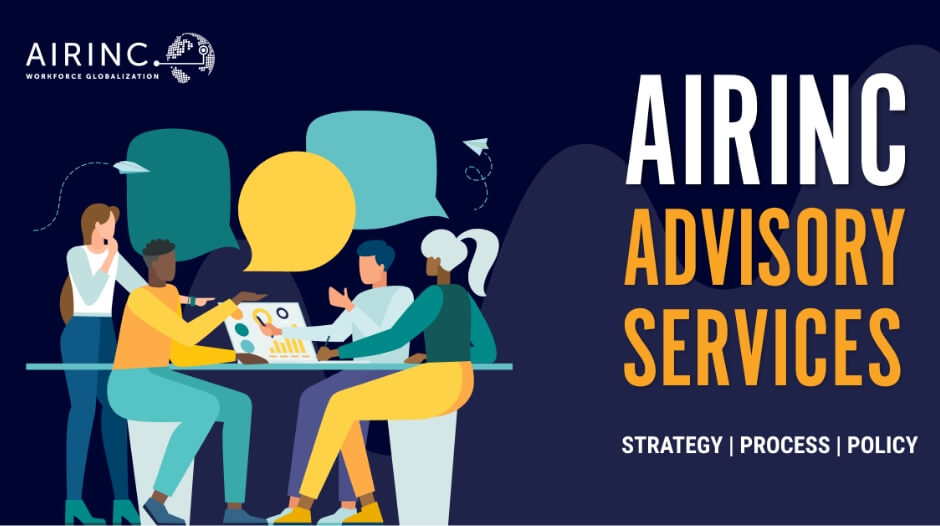AIRINC can help you refresh your Strategy, Process, or Policy. But who are the people behind the scenes?
Our Director of Benchmarking is Brooke Caligan. In Brooke’s current role she is responsible for designing and managing benchmark studies and analytical projects on AIRINC’s Advisory Services team. Brooke joined AIRINC in 2004. Let’s hear more!
Brooke, AIRINC’s benchmarks are really popular, why?
Not only do we have a wide catalogue of benchmarks, but we strive to publish reports that are relevant, thoughtful and offer insights beyond just pure benchmark statistics. Our benchmark data is overlaid with knowledgeable commentary to make the information even more valuable. I love that we run all different types of surveys. Everything from more traditional policy and practice surveys, like our Long-Term Assignments benchmark, to surveys capturing trends in the marketplace, such as our Mobility Outlook Survey, to short, pulse benchmarks on current issues that mobility practitioners are facing in real time.
How many benchmarks does AIRINC run in a year?
On average, we run over 10 surveys each year. We regularly publish AIRINC benchmarks and also run client-specific surveys, which are custom benchmarks designed to address an organization’s defined needs. There is certainly no shortage of potential benchmark topics and we run surveys on all aspects of mobility.
What is your favorite of all the benchmarks?
That feels a bit like choosing a favorite child! Although I always look forward to publishing our annual Mobility Outlook Survey, which offers a leading-edge view into mobility trends, I also appreciate the value companies draw from our comprehensive policy and practice surveys. Especially when they drill down into a specific data cut to gain insights that are relevant to them.
How do you recommend companies use benchmark reports?
Benchmark surveys are a starting point. They offer perspective on what’s happening in the external marketplace. Benchmark data can be used as a “temperature check” to evaluate if your program is aligned to your ideal market position, it can be used as a source of inspiration to understand what other companies are doing in the competitive landscape, and it can be a powerful tool when making a business case for change. However, benchmarking is just one piece of the puzzle. To drive the most value out of benchmarks, you should also consider your organization’s context to make informed decisions that are right for your mobility program.
How did you get into benchmarking?
I come from an analytical background, but I’ve also had client-facing roles at AIRINC and work closely with my colleagues in our Advisory team on consulting projects. Benchmarking is a natural fit for me because it combines quantitative assessments with qualitative insights. It’s the best of both worlds – data-driven and customer-focused!
When you are not benchmarking for AIRINC, what do you like to do for fun?
My two young boys and Bernese Mountain dog keep me very busy. We love spending time outdoors to burn all that energy. Depending on the season that means hiking, skiing, swimming or sometimes just playing sports in the backyard. I’m also an avid runner and enjoy going to craft breweries with my husband.
AIRINC’s Advisory Services team of seasoned mobility consultants are dedicated to helping you. With deep expertise in mobility strategy, program operations, process design, benchmarking, compensation, and policy development, you can leverage the experts you need to drive meaningful change in your mobility program.



.png?width=277&height=369&name=MicrosoftTeams-image%20(50).png)


%20(71)%20(1).png)
%20(6)%20(1).jpg)
%20(83)%20(1).png)

